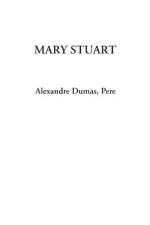At ten o’clock at night they set out, walking behind the chariot, preceded by the herald, accompanied by men on foot, who carried torches to light the way, and followed by twenty gentlemen and their servants. In this manner, at two o’clock in the morning, they reached Peterborough, where there is a splendid cathedral built by an ancient Saxon king, and in which, on the left of the choir, was already interred good Queen Catharine of Aragon, wife of Henry VIII, and where was her tomb, still decked with a canopy bearing her arms.
On arriving, they found the cathedral all hung with black, with a dome erected in the middle of the choir, much in the way in which ’chapelles ardentes’ are set up in France, except that there were no lighted candles round it. This dome was covered with black velvet, and overlaid with the arms of Scotland and Aragon, with streamers like those on the chariot yet again repeated. The state coffin was already set up under this dome: it was a bier, covered like the rest in black velvet fringed with silver, on which was a pillow of the same supporting a royal crown.
To the right of this dome, and in front of the burial-place of Queen Catharine of Aragon, Mary of Scotland’s sepulchre had been dug: it was a grave of brick, arranged to be covered later with a slab or a marble tomb, and in which was to be deposited the coffin, which the Bishop of Peterborough, in his episcopal robes, but without his mitre, cross, or cope, was awaiting at the door, accompanied by his dean and several other clergy. The body was brought into the cathedral, without chant or prayer, and was let down into the tomb amid a profound silence. Directly it was placed there, the masons, who had stayed their hands, set to work again, closing the grave level with the floor, and only leaving an opening of about a foot and a half, through which could be seen what was within, and through which could be thrown on the coffin, as is customary at the obsequies of kings, the broken staves of the officers and the ensigns and banners with their arms. This nocturnal ceremony ended, Melville, Bourgoin, and the other deputies were taken to the bishop’s palace, where the persons appointed to take part in the funeral procession were to assemble, in number more than three hundred and fifty, all chosen, with the exception of the servants, from among the authorities, the nobility, and Protestant clergy.




